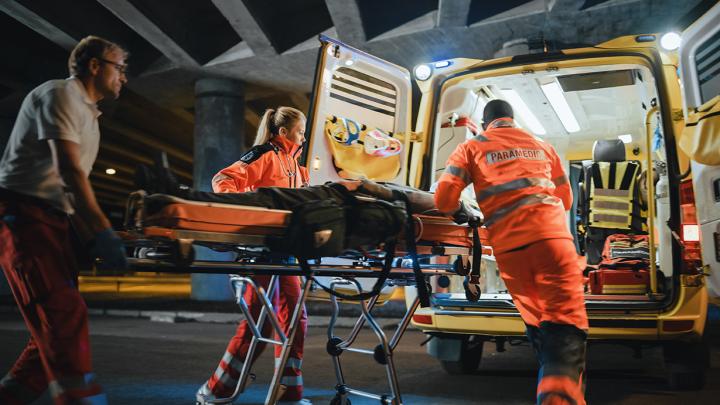Case Study — People Risk 2024
Crisis24’s Critical Care Coordination Results in a Rapid Medical Evacuation from an Offshore Rig

"Thanks to Crisis24's swift response and efficient medical services, our crew on the oil rig received timely care and was safely evacuated. Their dedication to ensuring personnel safety is commendable, and we look forward to our continued partnership. We are grateful for their support in keeping our team safe in challenging environments.”
- Rig Manager, Oil and Gas Organization
Situational Awareness
An employee on an oil rig in Southeast Asia experienced chest discomfort. Due to the nature of the environment, rapid assessment and well-coordinated response were essential to ensure that the patient was transported to an onshore medical facility to receive the necessary treatment with minimum delay. Medical emergencies in remote environments pose unique challenges, often requiring specialized intervention not readily available onsite. Comprehensive emergency plans, well-trained medical teams, and 24/7 medical assistance are imperative for ensuring the safety and well-being of all personnel.
Crisis24 in Action
Initial Assessment and Rapid Action
Upon receiving the treating doctor’s report about the patient’s chest discomfort, Crisis24 immediately activated its response protocols. Despite the normal Electrocardiogram results, the patient's symptoms and medical history warranted an urgent response.
Crisis24’s Assistance Center, in collaboration with the topside medical team and Crisis24’s medical director for APAC, swiftly agreed on the necessity of an emergency medical evacuation. This decision, backed by high-standard medical protocols, ensured that no time was wasted in deliberation.
Efficient Coordination and Trust
The longstanding and strong relationships with our client and oil field operator were pivotal; their trust and immediate agreement with our recommendations eased the decision-making process. Aware of the logistical complexities of an offshore evacuation in the region, especially under time constraints and military curfews, Crisis24's Assistance Center coordinated flawlessly with all parties involved. The medical escort team's prompt actions ensured the patient’s stable transfer to the onshore clinic, where he received immediate care upon arrival.
Diagnosis, Treatment, and Recovery
Elevated Troponin T levels indicated a myocardial infarction, leading to a successful Percutaneous Coronary Intervention (PCI). Throughout, Crisis24 kept all parties informed about the patient's progress. The patient recovered well in the hospital and was soon deemed fit to fly. Crisis24 facilitated the necessary arrangements for his safe return to Malaysia, where he continued his recovery.
Results
In less than six hours of receiving the initial call, the patient was successfully stabilized in the clinic, thanks to Crisis24’s ability to make swift, protocol-driven decisions in emergency situations, underscored by our strong relationships with key partners. From evacuation to hospital admission, Crisis24's Assistance Center maintained clear and continuous communication with the client, the hospital, and the local medical partner. This transparency was crucial in managing expectations and ensuring smooth logistical execution. The successful management of the patient’s case is a testament to our commitment to providing reliable, high-quality medical services in challenging environments.
Evacuation Preparedness Checklist
Pre-Emergency
- Emergency Plan: Have a clear medical emergency response plan, MERP.
- Training Drill: Regularly train staff on emergency and medevac procedures.
- Emergency Contacts: Keep an updated list of contacts for medical emergencies.
- Medical Supplies: Ensure access to a well-stocked first aid kit and medical supplies.
- Communication Equipment: Maintain and test communication devices.
Emergency Response
- Assess Situation: Quickly determine the need for medevac.
- Provide Initial Care: Administer first aid or immediate care.
- Activate Response: Follow the emergency plan to initiate medevac.
- Prepare Patient: Stabilize the patient for transport.
- Landing Zone: Prepare for helicopter evacuation.
- Security clearance for the patient to land at the Airport.
- Ground transportation activation
- Medical team activation
- Continuous communication and updates
Post-Evacuation
- Debrief: Review the evacuation process for improvements.
- Report: Document the incident and evacuation details.



